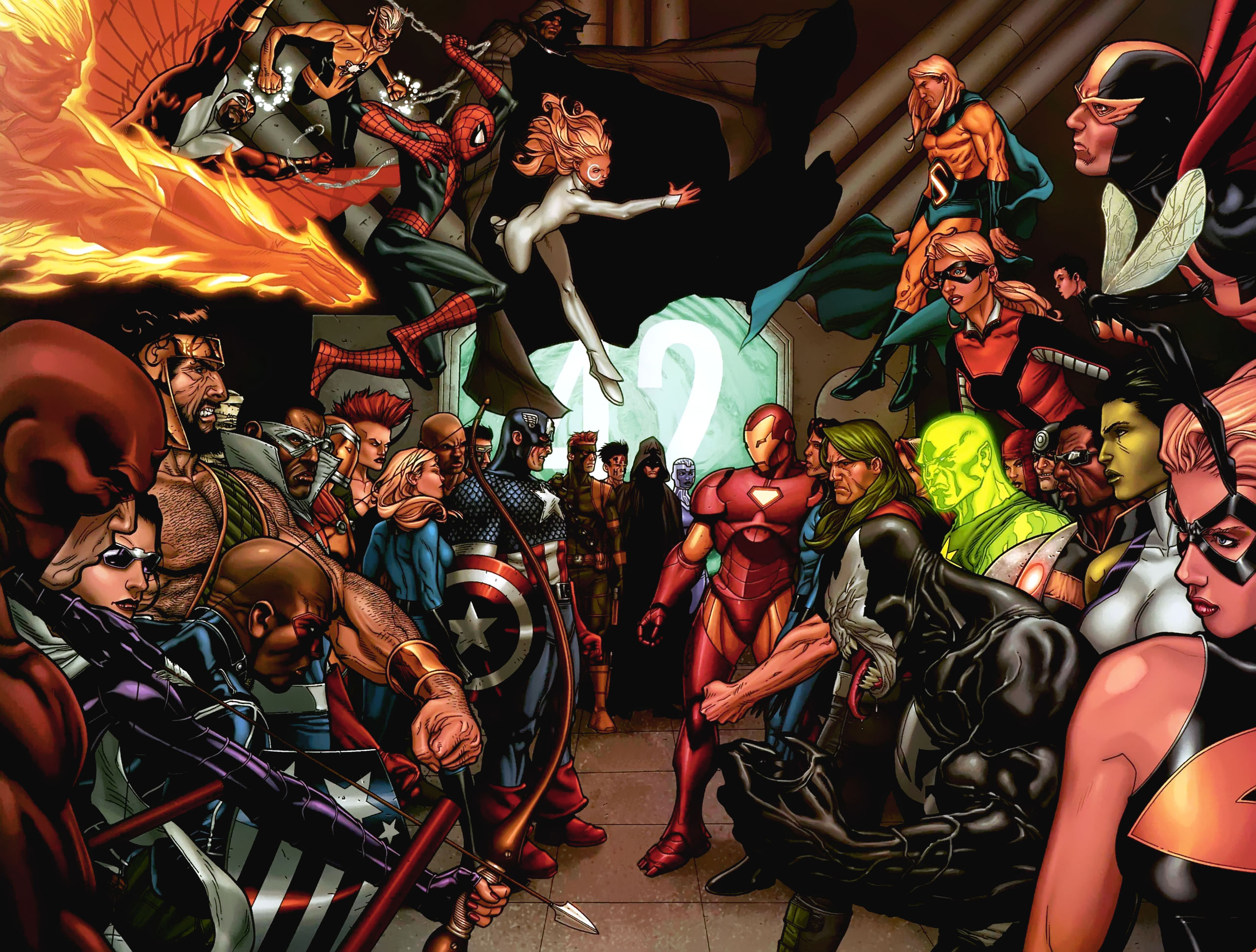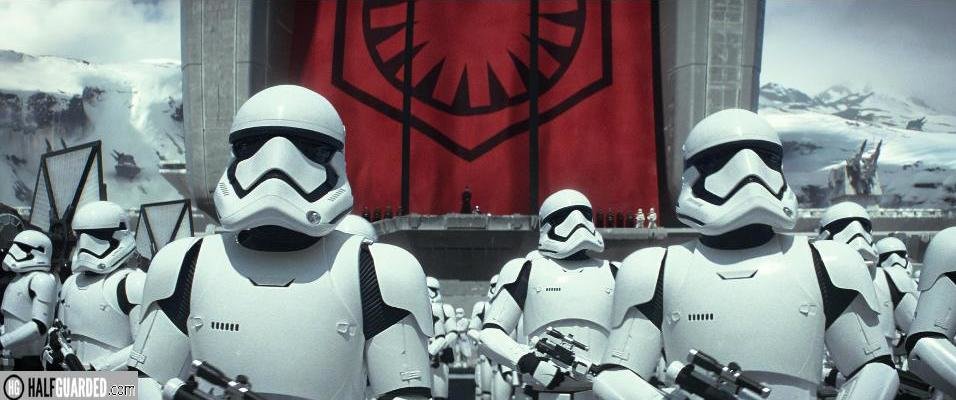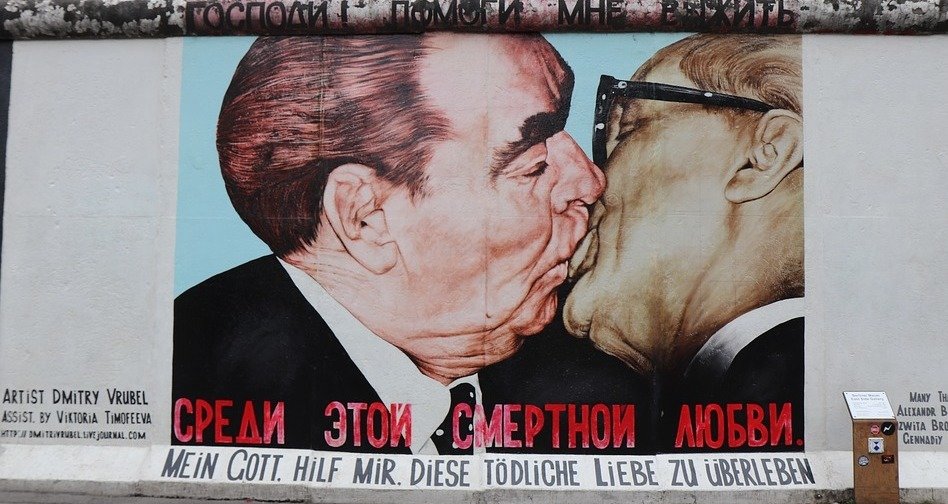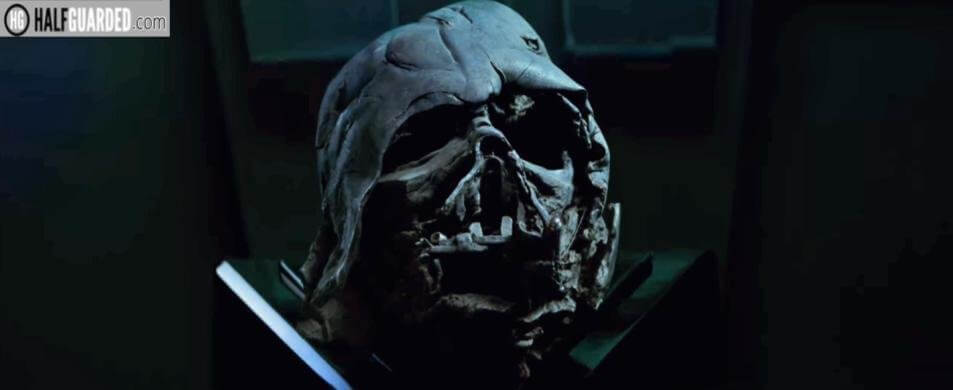If they could bottle the chemical reaction that viewing Captain America: Civil War causes on the human senses it could be made into the most sought after narcotic in human history. Yet there is no way such a drug could be made illegal, how could you argue to ban a drug that caused nothing but a wonderful, positive, feel good experience on the user?
And it all began ten years ago. Jesus, ten years ago? Ten fucking years? What have I done with the last ten years? Well, for a start I’ve read a shit load of comics and gone to the cinema more than I’ve visited family, because they don’t watch Marvel movies or read comics you see.
The movie version of Civil War is kicking off the what is being referred to as Phase Three of the Marvel Cinematic Universe. Now on a personal level Civil War the comic in 2006 kicked off my own Phase Three, that being Phase Three of my own comic reading obsession.
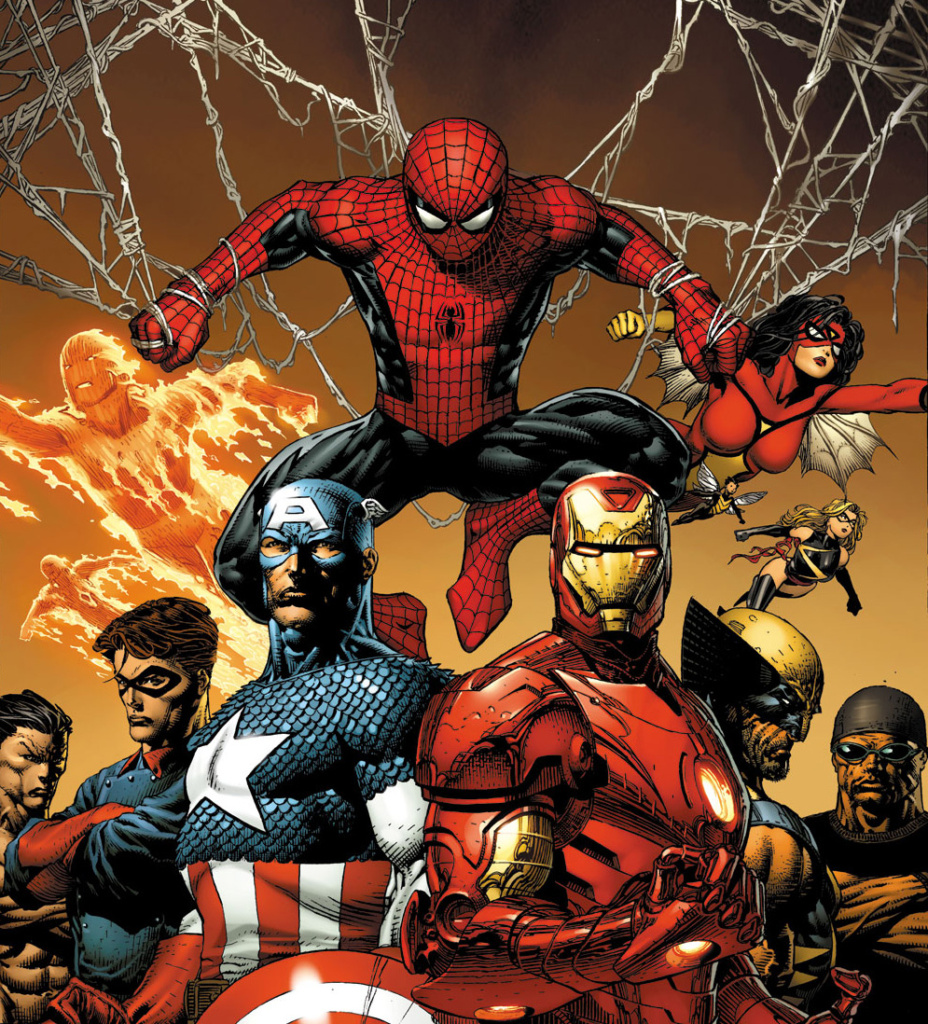
Phase one of me being a comic fan slowly built steam after my dad randomly bought me a copy of Rom Spaceknight issue 46 in 1980 one Sunday Morning. My Phase one spread across the entire Marvel Universe and made a long bus trip to my nearest comic shop a monthly tradition until a massive dip in quality of story and art in 1990 caused me to loose interest. Suspecting I was outgrowing comics I left the hobby behind.
My love for all things nerdy was rekindled some six years later when I caught wind of a storyline called Age of Apocalypse that had apparently changed the entire history of the X-Men. That and finding out Wolverine had lost his adamantium was enough to get me to revisit my nearest comic shop for the first time in years where I found the exact same staff behind the counter as before. Phase two was a purely X-Books affair and ran from 1996 until around 1998 when I became disillusioned with the disappointments of the Onslaught saga and operation Zero Tolerance which failed to deliver the earth shattering events to Mutant kind that had been promised. (Phase two also consisted of me collecting back issues of all the X-books I’d missed between phase one and two.)
Eight years later and I was getting a vibe that interesting things were happening in comic again. I started to sample a few issues in a retelling of the Marvel Universe in the Ultimate line of comics, while a refocused, rebooted Avengers comic featuring a dream lineup had also caught my attention. But for my Phrase Three to really kick in and make my forays into the dodgy end of town to visit the comic shop a weekly occurrence it would take an event of massive proportions. An event that would tear apart the regular Marvel Universe like never before.
It would take a Civil War.
A Civil War that would set hero against hero in the Marvel Universe in a story so well remembered that the very sub title “Civil War” to Captain America 3 drove the Marvel Cinematic fans into raptures on it’s announcement. Civil War, a story that not only divided the superhero population for the battle of the century but even today spilts fans opinions down the middle, loved and derided to such equal measure that it conversely shows up on both greatest crossovers of all time lists and worst crossovers of all time lists.
One thing that can’t be denied is that Civil War was brilliantly marketed. Unlike most generic crossover campaigns the posters and flash cards that adorned comic shops on my return in 2006 (and yes the same staff were still behind the counter) kept things simple and told you everything you needed to draw you in. Every poster told the story with variations on one scene, one image. Captain America with an army of superheroes by his side, facing off against Iron Man with his own army of super heroes, all squared off against each other, all ready to start knocking the absolute shit out of each other. The Superhero population was going to war.
“Who’s side are you on?” the posters demanded, to know, and while the idea that readers were free to choose who to throw their support behind is questionable (and we will get to that later kiddies) it was an intriguing concept that could so easily appeal to fans who were dedicated, new, casual and those like myself long lapsed.
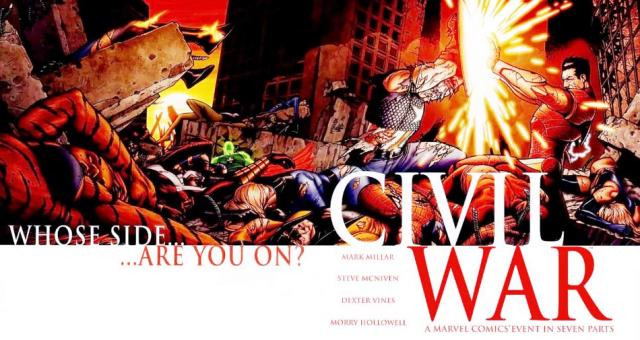
Of course heroes battling heroes is a storyline almost as old as comics themselves. Ever since the Sub Mariner and the Original Human Torch crossed over each other’s titles in the 1940’s in what was then Timely Comics, heroes knocking the shit out of each other has been a staple of Marvel comics. Whether it be the result of an initial misunderstanding or villain manipulation you’ll struggle to find two major heroes who haven’t engaged in fisticuffs before putting their issues to one side to fight the real bad guy. Spiderman even had his own series Marvel Team Up that practically lived off the concept. It’s an easy seller, match up two heroes or two teams, stick them on the cover facing off and you’ve got an easily marketable battle issue. But it’s rare that any such story runs over an issue or two or beyond a single giant size annual (The X-Men vs Avengers and X-Men vs Fantastic Four four issue limited series were probably the longest runs creators could get out of the idea.)
Civil War however was huge. The main series ran monthly for seven issues, though the effects of the war dominated most of the comics published during this period, with a civil war banner clearly identifying the around seventy tie in issues that accompanied the main series.
The premise for Civil War and the motivation behind the conflict drew heavily on issues driving at the core of an American society at the time that was still feeling the effects of the attack on the World Trade Centre. It’s become a cliché that any TV, film, book or song that has any sort of dark edge and happened after 2001 is automatically credited to having been influenced by 9/11 as if all media before that fateful day was glowing, colourful and frivolous. Yet in Civil War the parallels with post 9/11 American are very intangible.
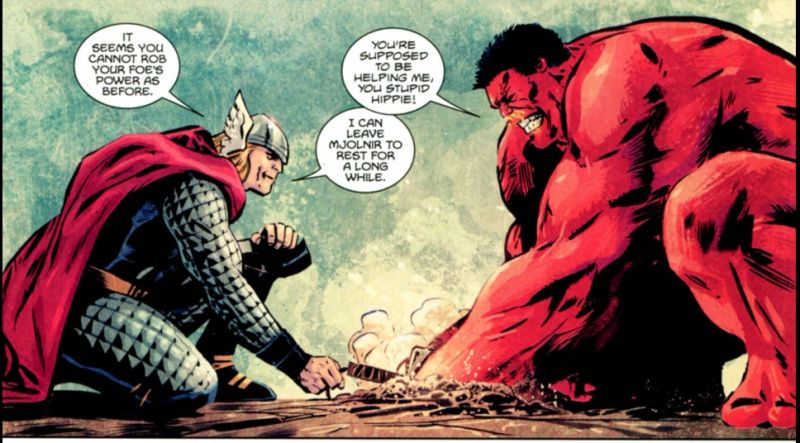
Civil War starts with an inexperienced superhero team the New Warriors causing a disaster while attempting to apprehend a team of supervillains as part of their reality TV show. The reckless act leads to the deaths of over 600 civilians in Stamford many of them children at the end of the battle when the villain Nitro unleashes an explosion that devastates the surrounding area including a nearby school. In the aftermath there is a media backlash against superheroes and the Government pushes for a Superhero registration act which would essentially end the vigilantism and bring any active super enhanced people under Government control and have them surrender their secret identities. The act divides the Superhero community with some falling in line with registration and it’s chief instigator Iron Man while Captain America sees the act as impeding on Civil liberties and believing that the heroes should retain independence and be free from the political agendas that Government control would bring.
It’s a story that taps into the concerns over privacy and civil rights that were in danger of being eroded in the name of security following 9/11. The controversial Patriot act was passed the very same year of the comics publication.
Civil War draws on all the symbolism associated with 9/11. There are scenes of the heroes at this version of ground zero, aided by firemen and other authorities in working through the rubble. This is followed by debates in the media over regulating superheroes (She Hulk is shown on Larry King) the mass services for the victims of the tragedy where Tony Stark is confronted by the mother of one of the dead children and in the backlash the Human Torch is attacked in the street by a mob.
The first issue of the series is simply thrilling, a fast paced story, concisely showing the tragedy, the aftermath and the start of the war as Captain America makes his stand against registration and is immediately forced to become a fugitive with Iron Man vowing to uphold the act and police those who refuse to conform.
Despite being very timely with regards to it’s themes and issues it’s wrong to say Marvel was actively looking to tell a story like Civil War. Just like Death of Superman was triggered by the necessity to find a storyline that delayed the marriage of Clarke and Lois, the idea of Civil War came about as a stopgap between two other storylines. According to an interview with Editor Tom Breevort the original big crossover storyline for 2006 was meant to be World War Hulk. However it was felt that more time was needed to establish Hulk off in space in Planet Hulk first and so at a Marvel summit ideas were passed around. Mark Millar suggested an idea he’d been considering for the Ultimate Universe where a division in the X-Men of that line would cause the mutants to go to war with each other. The concept was adapted to fit in the regular Marvel Universe and be based more around the Avengers characters (Most of The X-Men stay out of Civil War as Emma Frost cites the heroes general apathy to the problems of Mutants in the past as a reason to stay neutral). Breevort also has recollections that Millar’s original concept would have Cap as heading the Government forces and Iron Man leading the rebellion.
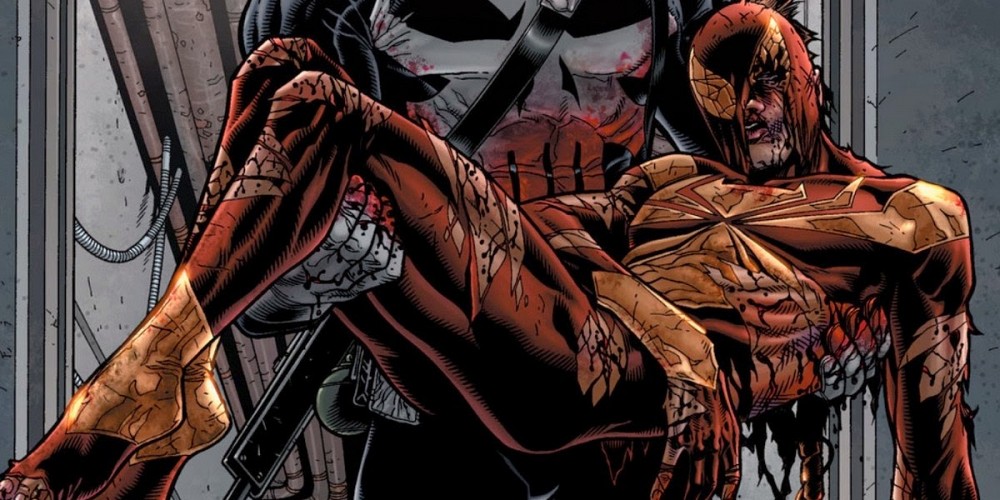
To imply that Civil War is a ground breaking series for Marvel is to overstate it as the grittier, more down to Earth style and nod to political and social issues is reminiscent of work already established in the alternative Ultimate line. However for the regular Marvel Universe it is a definite departure. Major event storylines tend to based on the massive, unstoppable threat or use the alternative dimension or time line gimmick to sell itself. This was a more down to Earth and personal story without a clear cut villain in the traditional sense.
One thing that soon becomes clear is that despite the “Choose a side!” gimmick the story for the most part throws the readers sympathies with Team Cap and it’s undeniable that most fiction tends to side with those who rebel against authority in some form or other. There are strong motivations and arguments on both sides of Civil War, but the tactics and methods employed by Iron Man can’t help but portray him in the role of a slight villain. He is the one hunting and arresting heroes who refuse to sign the registration act and imprisoning them without trial in a Guantanamo style prison in the negative zone. He is also the one that has Shield agents on his side as well as troops specially equipped to deal with enhanced individuals (Cape Killers) and later even bolsters his ranks with Villains. (Again drama is normally built on making those we root for the underdogs.)
Then there is an indisputable lopsided balance of charisma and popularity on the rosters of the opposing sides. Cap of course has the cool guys on his side Luke Cage, Daredevil, Wolverine, Black Panther, Falcon while the final page of the first issue shows Iron Man flanked by his main supporters stuffy Reed Richards and former wife beating piece of shit and whiny suicide attempter Hank Pym. Spider-Man is initially on Team Iron Man until his conscience drives him to switch sides. (Again Spider-Man’s journey to an enlightenment of who is right is another example of who the good guys are supposed to be).

Interestingly Mark Millar claims he never intended Stark to be the villain and was surprised when writers in other series would portray him as such for their own spinoff episodes. Millar’s own sympathies lay with Stark, citing the use of super powers as being as dangerous as owning a handgun and laws being necessary to regulate them for the safety of the public. Indeed when comparing the arguments objectively and putting aside the methods used to enforce the act it appears that Stark is making the most sense and in the real world the public when faced with beings who could (and in The Marvel Universe regularly do) level an entire city would live in fear and be in favour of regulation.
One of the key criticisms against Civil War is that many of the key figures act totally out of character. So huge is the cast of Civil War that too many characters are given short shrift with regards to their motivations for joining either side. So we get the likes of Wasp, She Hulk, Tigra (who ends up being a double agent for Stark although why is never explained), Cloak and Dagger, Wonder Man, Ms Marvel acting as merely background and making up numbers for the big fight scenes.
As far as Captain America and Iron Man go their motivations are for the most part are in keeping with their backgrounds. Some balk at the idea of Captain America fighting against his own Government. However to me this is a very basic interpretation of the character and in many ways misunderstands him. Rogers is the man of World War Two which was a black and white, good vs Evil struggle against a totalitarian threat. There is a romanticism to his heroism, you could call it a naivety but also a sense of honour. His role as the symbol of the red, white and blue is a sign of loyalty to the dream and an idealised America. It’s never been to any American government as evident by his refusing to surrender his independence and even walking away from the uniform on several occasions (following Watergate a disillusioned Rogers became the Nomad a man without a country). Cap making a stand against a law he thinks is morally wrong is entirely in keeping with his character.
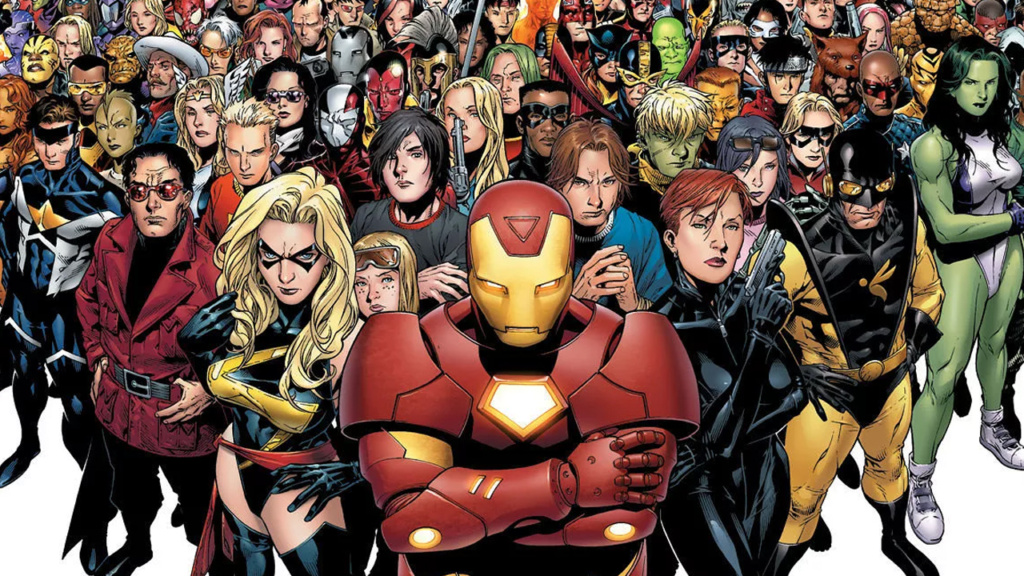
However as the series progresses you begin to question what his overall strategy is beyond liberating his captured comrades and evading Iron Man’s forces. His crusade starts to border on the obsessive, dangerously prideful and in a most unlike Captain America development even vengeful. This plays into the final confrontation between the two sides, a fierce battle in the skies above and on the streets of New York that devastates the city. In an emotional climax Cap is restrained by a mix of service men, firemen, EMT’s and police officers and becomes aware of the devastation his actions have caused.
Cap’s total disregard for the lives of citizens he has endangered just does not fit in with the character who above all has put the sanctity of all life above everything. Neither does him inviting a foreign power onto American soil in for the form of Namor and the Atlantean army to tip the balance in his side’s favour. At the end Cap is distraught at how he has been blinded to what his actions have led to and has actually proven the pro registration forces right by making the fears driving them a reality. It’s a scene that would work better with the Ultimates Cap but just doesn’t fit in with the regular Marvel Universe’s Cap who after his surrender comes across as petty and completely foolish.
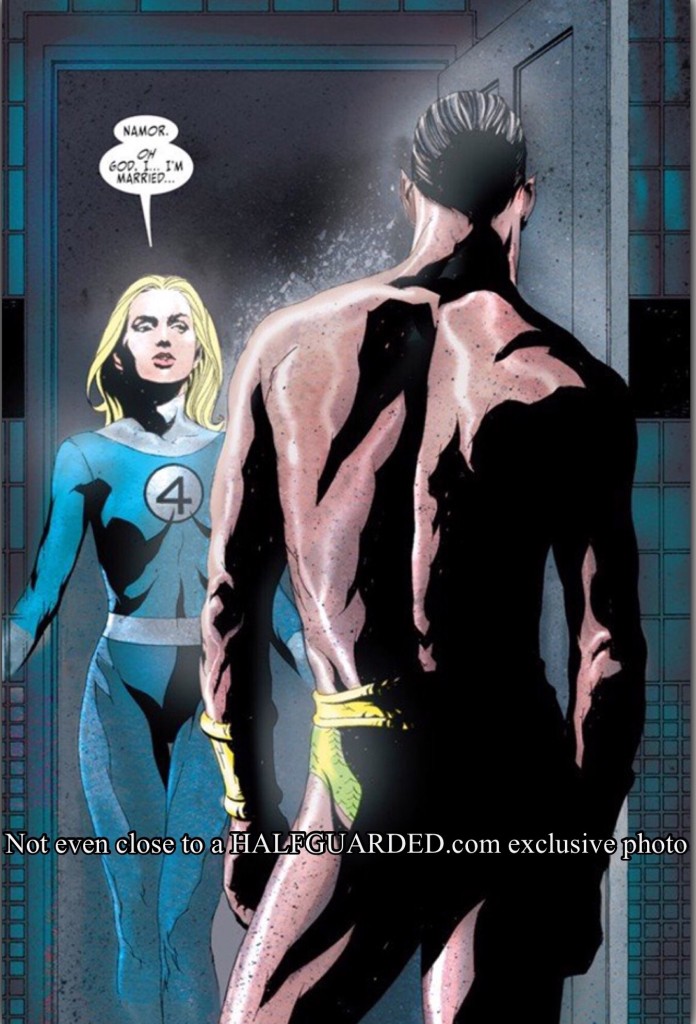
Iron Man’s own methods have been criticised as bordering on the fascist however this forgets what drives him as a realist and a futurist. In keeping with the cold science leanings of his main allies, Stark is able to put aside morality in order to make the decisions that will allow him to take the actions that will get the job done in the greater good. Stark’s goal is to prevent another Stamford incident and further loss of life, and if he must take actions that are distasteful and unbecoming of what we consider a superhero to be so be it.
There are two great scenes towards the end of Civil War that feature Cap and Iron Man and are great insights into them and what has driven them during the storyline. Unfortunately they are also scenes that I suspect a fair amount of readers who think they have read Civil War will not even have turned the pages of. To me this highlights a flaw with the storyline because unlike with a lot of crossover series if you have only read the main series of Civil War whether at the time or in it’s collected graphic novel form you are missing large, vital parts of the story.
Accompanying Civil War amongst the main tie in issues was a sister publication Civil War: Frontline, which as well as been a great comic in it’s own right (in many ways creatively superior to the main story) I would recommend it as essential for getting the most out the saga as a whole. Frontline has several threads running through it’s 11 issue run. It follows the aftermath of the Stamford Incident with the incarceration of Speedball the only member of the New Warriors to survive the tragedy and who is the target of blame for the population and becomes the most hated figure in America. There are also several stories that retell battles and incidents from real life wars and cleverly compare them to the events of Civil War which more than being a gimmick actually spotlights the implications that always result from any armed conflict.
The best storyline in Frontline is that of reporters Ben Ulrich and Sally Floyd as they cover and are caught up in the superhero war. It’s a story that gives much needed depth to Civil War through first hand accounts of the combatants thoughts through the reporters interviews and coverage of events. During the course of their reporting they discover a conspiracy over an assassination attempt on an Atlantean diplomat.
What’s interesting is that throughout this series there is a lot more criticism of Captain America and the dangers of heroes running unchecked is highlighted more effectively leaving the reader with a more balanced argument towards the stance of the pro-registration factions (there are further examples of untrained, reckless heroes causing mayhem through their attempts at heroism). This follows through to the final issue where after the war is over the reporters get to conduct interviews with both Rogers and Stark.
Rogers comes across poorly, defending himself that he thought what he was doing was right at the time and in doing so seems aloof and ripe for ridicule. Floyd responds by ruthlessly ripping him apart, pointing out that he has no concept of what the America he represents actually is anymore, asking him when the last time he logged onto Youtube was or if he knows who won American Idol. She points out that no citizen appointed Cap to take the course of action that he did and it’s a very deflated and lonely Cap who is left in the interview room.
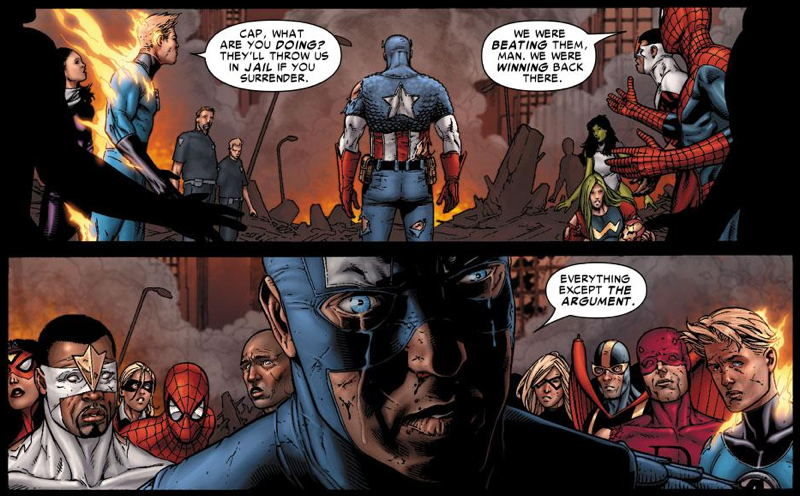
Stark fares better in his interview, even when it’s revealed that he was behind the conspiracy, manipulating events so that the Civil War would in the long term secure America from the threat of costumed heroes tearing the country apart by leading to a regulated Superhero Initiative in every state and a government backed prison to handle Villains. Stark is revealed to have orchestrated the fake assassination attempt banking on bringing America to the brink of War with Atlantis would bring the divided heroes together to combat the threat. While Stark is applauded for what he has done by the reporters (who also supress the story) he too is left broken by his actions which though necessary and for the greater good still weigh on his conscience.
It’s a gripping issue that adds a level of complexity to the entire storyline.
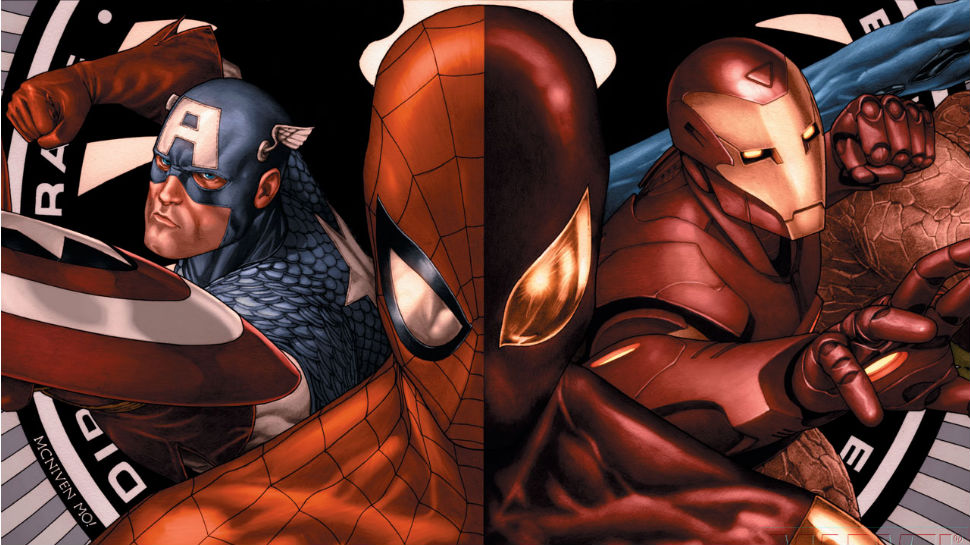
As a reading experience I found Civil War a far more rewarding experience at the time of publication, reading the story develop week by week across the Marvel publications (and I pretty much bought all of them) as opposed to reading the graphic novel collections. Revisiting the entirety of Civil War is a daunting task, not so much by it’s size but the concurrent events make organising the issues into one coherent single narrative is very difficult (especially if you’re trying to do so with the book format graphic novels).
By itself the main series is almost a highlights of the thrust of the story and alone it’s an enjoyable romp but it needs the tie in issues to greatly enhance the overall saga. While tie in issues of series such as Avengers Vs X-men and Siege are often merely filler those in Civil Wars are free to provide a diverse range of stories due to the all encompassing breathe of the conflict (although the X-Men is a clear cash grab that adds nothing to the saga). And there is so much to enjoy by branching off from the main series and reading the offshoots in how it impacts the regular series.
Read only the main Civil War series and you will miss one of the most gripping and emotional character pieces of the whole saga, that being the journey of Peter Parker. Loyal to Stark in the beginning to the extent that to show his support for registration he reveals his secret identity to the world (a major event that the ridiculous One Last Day story totally reversed). Him siding with the pro registration forces on the surface may seem a strange direction for the web slinger. However in his own series during Civil War you get to see the struggles with his conscience, totally conflicted over which side of the war he should be on and how what decision he makes will effect his loved ones. It’s a steady build as each experience in the conflict tears at his soul and is a gripping highlight of the saga.
The Fantastic Four are torn apart by the conflict with Sue Richards unable to come to terms with Reed’s cold logical approach to the crisis and joins Human Torch into defecting to Cap’s side, leaving an incredibly moving letter to Reed that humanises the couple like never before (Sue Storm proves a great character in Civil War). For his part Ben Grimm, for many years one of the heart and consciences of the entire Marvel Universes is disgusted by both sides and following a battle on Yancy Street that leaves a young man dead walks away from the entire conflict and leaves America for Europe.
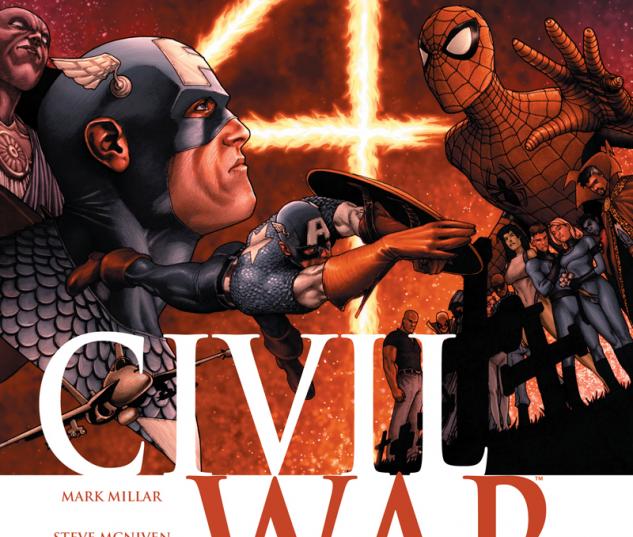
After some seven months of Civil War becoming a significant part of my Thursday evenings, the finale of Civil War was a jarring disappointment. Not that the issue was bad, it did successfully wrap up the conflict and didn’t cheat the reader how I feared it could with that old cliché of a sudden threat causing the two sides to put aside their differences and fight for a common cause (an early idea had the final issue featuring the Hulk’s return to Earth and the beginning of World War Hulk that would force the opposing sides to work together). The whole issue feels rushed and the giant battle fails to flow and be as gripping as it should. Steve McNiven’s artwork is fine at individual fight moments but it fails to convey the epic scale of what should be the biggest super powered war of all time in the same way that Bryan Hitch did in Ultimates 2. For a fight that is causing such mayhem there are few signs of the effect until the battle is over.
The drama, tension and overall carnage and horror is better served by reading the final 7th issue alongside other tie in issues around the same week. Amazing Spiderman sees the inhabitants of New York watching helplessly from windows or in the case of Aunt May and Mary-Jane watching on television, terrified at the outcome and watching for any signs of their beloved Peter (again in the same way that many saw 9/11 unfold). Meanwhile in the offices of the Daily Bugle, JJ Jameson stands before a wall of possible headlines for the battles outcome in readiness for what story will be run in the next day’s papers. Frontline has Ulrich and Floyd caught up in the chaos on the streets of New York and unable to comprehend what is going on are forced to take cover in the subways. Emerging from underground after the battle they are shocked and angered by the sight of a smashed and ruined New York, the scene from the ground being able to dramatically convey the horror of the aftermath a lot more effectively than the distant overhead shot of McNiven in the main series final issue itself.
Reading these and other issues and you’ll gain more of a grim tone on the aftermath of the war, but if you leave it to the final issue of Civil War and you’ll have a story that skips hastily from Cap’s surrender and into a glowing, optimistic conclusion of Stark appointed as head of SHIELD and his fifty states initiative in full effect.
Even with it’s many flaws Civil War was an epic comic experience at the time and it felt like the birth of a different Marvel Universe one that was creeping towards Ultimate style stories. Directly from Civil War we had Steve Rogers assassinated on the steps of the courthouse on the way to his trial. A new era of Government regulated Superteams began with a core group of Avengers on the run as fugitives, meanwhile a Warren Ellis Thunderbolts series had the villains tasked with violently bringing in those vigilantes who still refused to register. Meanwhile a core of Avengers loyal to Cap’s stance continued to operate without registration and remained as fugitives.
The new laws regarding the use of super powers would ultimately fall to abuse when Norman Osborne would take control of the Initative from Iron Man in the Dark Reign storyline. The ripples created by Civil War would not dissipate for many years to come and when they did with the dire Golden Age era that set everything back on track to classic superhero stories the Marvel comic section seemed a lot less interesting place to browse.
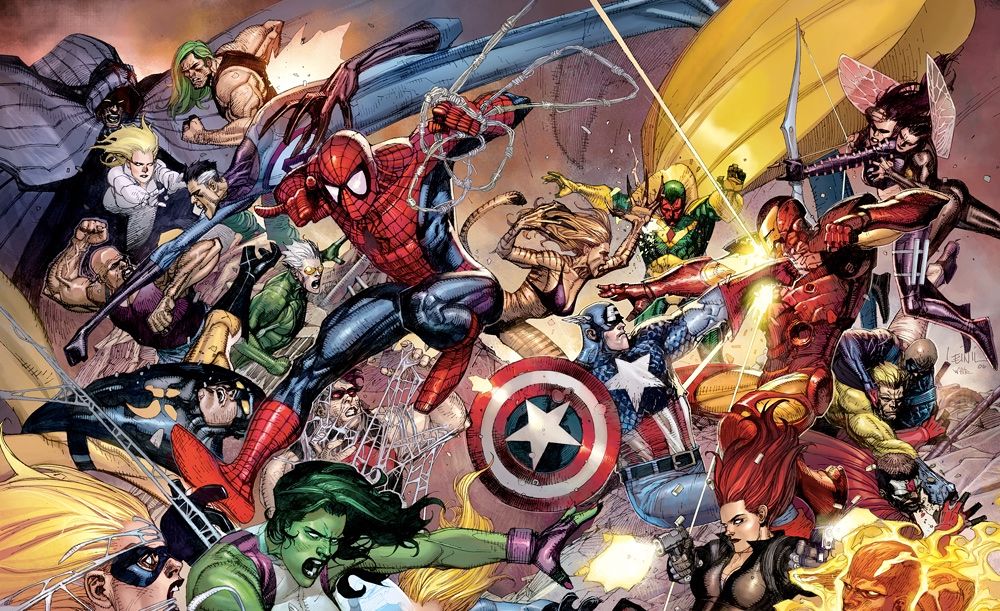
Generally I’m not a fan of the modern day giant crossovers. Aside from their cynical commercial nature I find them intrusive and problematic when having invested in a regular series only to find myself flung into someone else’s storyline. More often than not they rarely deliver on the promise of their build and marketing. The fact is though they do work. It was Civil War that brought me back into the fold as a comic fan and ten years on the collected editions still remain one of Marvel’s best selling graphic novels line.
It may then seem faint praise when I say that Civil War is my favourite company wide crossover (there are mutant centred crossovers I like better). It has many flaws, particularly when the main series is read in isolation, due to it’s rushed pace and the heavy handed approach to the characters and their motivations. There are quite a few key events that are massively contrived. Such as the first mass battle between the two sides which occurs when Iron Man fakes a disaster at a Nuclear power plant to draw out the non-registration forces. A ruse that sees pretty much every hero responding to this one incident, something that has never happened during any other crisis ever!!!
Potentially meaningful turning points in the story fail to make their full impact because they happen so fast we’re not given time to build to and savour them.
Yet there is so much that is admirable about Civil War. Unlike most crossovers built around the giant, mega world threatening it’s a story the audience can find elements to relate to with regards the issues of rights, security and even on a smaller personal level the choice of making a stand against something that is legally right but built on something morally wrong. It’s a story that is about something more than just heroes lining up to get their big moves in and beating the bad guy at the end, instead you can read it as an adventure but you’re invited to interpret and discuss the themes it explores.
While no one could claim it reaches the heights of 80’s superhero deconstruction such as Watchmen or Dark Knight Returns this is a presentation of the Marvel Heroes in a way we’d never seen before (or since). We see them flawed, we see them forced to face the reality of their actions and question their roles in the world, Maybe the reason Captain America seemed so out of character, so reckless is because he mirrored the real life America that at the time was knee deep in it’s intervention in the Middle East and was at odds with it’s own notion of heroism and romanticism.
Maybe this is reading to much into a story, which in essence is guys in capes and masks knocking the hell out of each other. But the admittedly crude representation of politics and social issues combined with the time it was published means there are ways to interpret Civil War and treat it with a degree of symbolic worth.
There’s a lot going on beneath the surface and ten years on it’s worth giving Civil War a fresh read.
Til next time
Dazza

